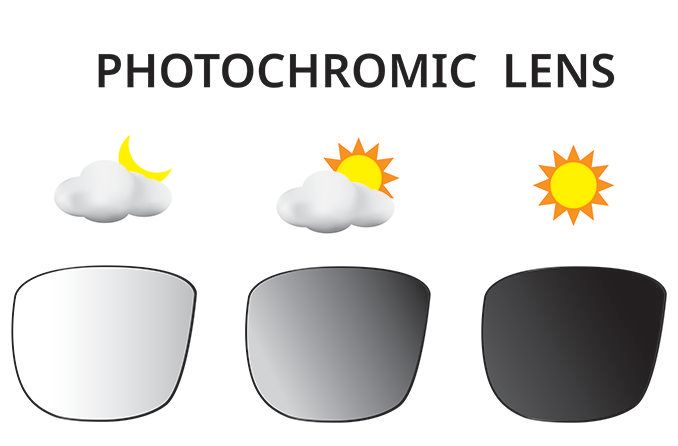When were photochromic lenses developed?

When were photochromic lenses (lenses that adapt to different shades of light) invented?
Photochromic lenses were first developed in the 1960s by William H. Armistead and Stanley Donald Stookey at Corning Glass Works, Inc. Light-adaptive lenses were the very first mass-produced variable-tint lenses, meaning they went from clear to dark lenses when exposed to sunlight.
However, the technology was not introduced commercially until 1991.
When were photochromic lenses first available?
Transitions Optical began as a joint venture between PPG Industries and Essilor International S.A. Manufacturing in 1990 in Pinellas Park, Florida. It was the first time people could buy lightweight photochromic lenses or Transitions lenses.
In 2019, the first contact lenses were introduced with photochromic technology. Acuvue OASYS with Transitions were developed by Johnson & Johnson Vision in partnership with Transitions. The collaboration took over 10 years to develop the photochromic contact lenses.
Read on for more information on photochromic lenses terms, how long photochromic lenses lase and more:
What is the difference between photochromic lenses and Transitions lenses?
Photochromic lenses are the type of lenses, and Transitions lenses are the most popular brand of photochromic lenses.
Photochromic lenses: These lenses are made primarily of plastic, glass or polycarbonate and are embedded with millions of molecules, including silver chloride or silver halide. The molecules are transparent until they are exposed to the ultraviolet rays of sunlight, at which point, they change shape, causing the lenses to darken.
Transitions lenses: Transitions lenses are the most popular brand of photochromic lenses on the market. Similar to the way facial tissues became known as Kleenex, the terms Transitions lenses and transition (lowercase T) lenses, are often used interchangeably with photochromic lenses.
There are actually several different brands of photochromic lenses on the market, including Sensity, Thin & Dark and PhotoFusion.
Lower-case transitions lenses: Oftentimes, people refer to any type of photochromic lenses as transitions, much the same way some people refer to any soft drink as coke or tissue generically as kleenex instead of the brand name Kleenex.
In addition to general-purpose lenses and contact lenses, several sunglasses manufacturers provide tinted lenses that use photochromic technology to go from dark to darker shades.
How long do photochromic lenses last?
Photochromic lenses will typically last about two to three years for polycarbonate lenses, often outlasting your prescription from your eye doctor.
Meanwhile, glass photochromic lenses never slow down or stop working. The technology in glass actually improves with age.
WONDERING WHETHER PHOTOCHROMIC LENSES ARE RIGHT FOR YOU? Consult with an eye doctor or optician near you.
Page published on Tuesday, March 24, 2020






